
Every garden will have wildlife that lives amongst the plants and in the nooks and crannies of various structures. When people leave their lawns uncut, it is not just the flying pollinators that will be attracted to the new habitat when various flowers appear, but many of the garden's resident creatures will move into the long grass, too.
It is these creatures that are then destroyed when the mowing resumes once May has passed. You only have to look at the life-cycle of grasshoppers to realise why No Mow May can be such a destructive scheme for wildlife.
If new habitats are to be created in gardens, then they need to be long term and not just for a month or two. In fact, there are many really good things that people could do in their garden to help our declining biodiversity rather than unwittingly risk harming it.
Now that I have retired from my job as head of entomology at the John Innes Centre in Norwich, I spend a lot of time talking to gardening clubs where I can explain the importance of balanced ecosystems. It would be great if you highlighted the pitfalls of creating temporary habitats (eg No Mow May) and what people could be doing instead. Ian Bedford, entomologist and show speaker, via email
PLANTLIFE REPLIES:
The campaign isn't and never has been about creating temporary habitats, but rather encouraging a change in mindset and behaviours as part of a new approach to lawns and green spaces.
Plantlife promotes a mixed mowing regime, with multiple different grass lengths, which has the greatest benefit to wildlife. Short lawns are best for bird's-foot trefoil, for instance, and mini meadow areas mown two to three times a year outside of peak summer months are often home to taller flowers such as musk mallow or oxeye daisies.
Denne historien er fra July 2023-utgaven av BBC Wildlife.
Start din 7-dagers gratis prøveperiode på Magzter GOLD for å få tilgang til tusenvis av utvalgte premiumhistorier og 9000+ magasiner og aviser.
Allerede abonnent ? Logg på
Denne historien er fra July 2023-utgaven av BBC Wildlife.
Start din 7-dagers gratis prøveperiode på Magzter GOLD for å få tilgang til tusenvis av utvalgte premiumhistorier og 9000+ magasiner og aviser.
Allerede abonnent? Logg på

SNAP-CHAT
Justin Gilligan on giant spider crabs and holding hands with an octopus
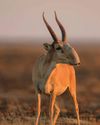
STEPPE CHANGE
Herds of saiga have returned to Kazakhstan, but there's a fine balance to tread
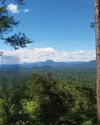
TREES FOR LIFE
Community is at the heart of conservation in the tropical forests of southern Belize
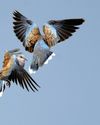
WHEN DOVES CRY
Turtle doves are now the UK's fastest declining bird species, but the RSPB is on a mission to save them

SURVIVAL OF THE CUTEST
We can't help being drawn to cute creatures, but our aesthetic preferences both help and hinder conservation

LIGHT ON THE NORTH
Spectacular images of Arctic foxes, reindeer and musk oxen reveal the wild beauty and diversity of Scandinavia
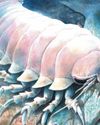
ROLLING IN THE DEEP
The super-sized crustacean that lives in the deepest, darkest ocean
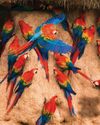
LET'S GET TOGETHER
Clay licks deep in the Amazon explode in a riot of colour, with macaws the stars of the show

FEMALE OF THE SPECIES
To sponge or not to sponge? That is the question for the bottlenose dolphins (Tursiops aduncus) living in Shark Bay, Western Australia.
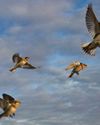
7 nature encounters for the month ahead
WITH NATURALIST AND AUTHOR BEN HOARE